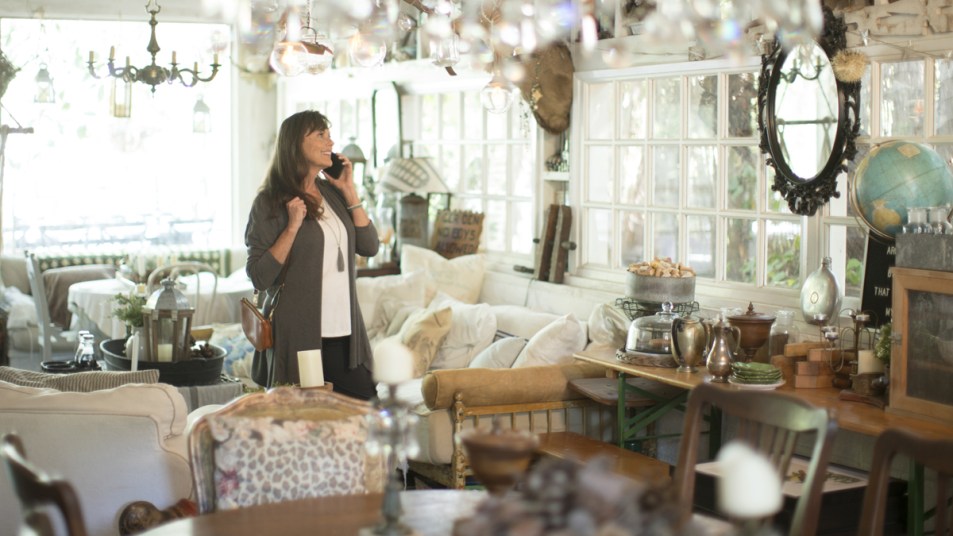10 Pro Tips For Finding the Best Antique Decor and Vintage Furniture

There’s no better way to upgrade your home decor than by introducing a timeless vintage piece that imparts a certain quality that only objects with history can. If you’re on the hunt for that perfect piece, we share our top tips on buying antiques and vintage pieces like the pros.
This new approach to blending old and new is all about decorating stylishly and sustainably. There’s a return right now — and about time, too — to authenticity, honesty, comfort, good design and things you can trust, such as handcrafted designs using natural materials. Of course, I wanted to add my own interior touch to my place, but I also wanted to be resourceful and smart and not buy a whole pile of new furniture.
I’ve always had a magpie instinct. It’s so rewarding, and the thrift pieces are often one-off finds as opposed to mass-produced stuff. Having said that, I have found the odd mass-produced item in Salvation Army, and if it saves another piece going to landfill, the joy of giving something “crappy” another life feels like beating the system — ha!
Most of all, I’m drawn to soulful, timeless pieces (things with a history and a narrative) or pieces that transcend trends. But if something is a little wacky, unique, or out there and you fall for it, grab it. Sometimes it is that item that can make a space sing.
Having an eye is everything in the interiors world, even when foraging. It helps you pick the gems, but I do have a few tips and design secrets to help you hunt out that bargain or swoon-worthy piece. Here goes:
1. Be Patient
It takes time, so make sure you are looking in all of the (right) places, all of the time. Be passionate in the hunt. I run into my local Salvation Army every time I pass by in case I find a gem for an interior project. One 1960s-style four-bedroom house I styled for an Airbnb was close to entirely sourced from the Salvation Army for $2000, except for a beautiful, original 1960s designer sofa, coffee table, armchair, and headboard.
I sourced large, original, era-appropriate timber frames (over a few weeks) and framed fashion tear sheets from magazines to give the place a current vibe while adding an element of fun. The vases, lamps, and other homewares I placed there were all sourced from the Salvation Army store.
2. Make Friends
Relationships are key, so you receive a heads-up when good pieces hit the floor. Get to know the shopkeepers and owners and they might clue you in ahead of the others.
3. Look At the Material of the Piece
Is it solid timber, brass, leather, or pottery? Turn it upside down and inside out. The most important tip I can give is to always look for good quality, and items that have a story to tell.
4. Go With Classic
Look for simple lines and curves in pieces. Imagine you are shopping for sculpture.
5. Know When to Splurge
In regards to the more expensive items, never splurge on anything that doesn’t make you swoon — or at least increases your heartbeat.
6. Focus On Timeless
I own pieces I’ve had for 25 years, which have stood the test of time. Some are meaningful; others practical. Lighting is one of those, and it’s a great practical investment because lights can go with you anywhere, especially accent lights (see my little designer kitchen lamp against the pink-tiled wall). This could be the piece that changes a room instantly with its gentle glow.
7. Cast a Wide Net
Take the road less travelled and look into the following: Salvation Army, Goodwill, eBay, Facebook Marketplace, weekend markets, antique stores, vintage stores, and items directly sold from makers. You’ll find treasures at all those places.
8. Vaguer the Better
When looking for vintage furniture on eBay, Gumtree and Facebook Marketplace, don’t be specific with your searches. Use unique word combinations related to what you’re after, for example, handmade or handcrafted and pop in two material combinations, such as timber and leather, and you’ll get more choice.
Shopping on Instagram, you need to be very specific and follow particular designers or hashtags. Make sure you have notifications switched on so you can act quickly.
9. Choose Your Pieces Well
That means items that resonate with you, that are personal and that you will love forever. Be brave! Going forward, sustainable living and shopping — whether that means recycling, upcycling, or supporting brands that care about making products that will last a lifetime — should become a way of life for all of us.
If you haven’t started to already, make the most of sources that are local to you and remember, almost every town has a Salvation Army or Goodwill store. The journey of improving your home is one of the best things you can undertake. Have confidence in your style, forget the trends, trust your heart and create an interior designed to last and feel like home.
How to Find the Hidden Gems
When it comes to buying antiques, the thrill of the hunt can quickly become overwhelming so we asked the team at Antiques Roadshow to share their top tips.
- Buy what you are passionate about: Don’t buy in the hope of making money: allow yourself to be excited by your collecting and don’t worry about investment potential.
- Learn about your subject: Read books, visit collections and dealers, attend auctions and speak to experts there.
- Question yourself: Do you love it? Is it a good example of its type? How rare is this particular one? Is it by a notable maker or designer? Is it in good, original condition?
- Buy the best with what you’ve got: Make sure you know the difference between good and poor quality before you buy.
- Be selective: Collecting should be about quality, not quantity. Remember to keep your collection fluid, not set in concrete. If better examples are found, sell off the poorer ones.
- Avoid fashion: Form your own opinions about what to collect. Don’t follow the pack: consider buying what others aren’t buying.
- Be adventurous: Mix and match what you buy and avoid being limited by sticking to just one style. Good quality objects from different eras can look really good together.
- Allow mistakes to happen: Don’t beat yourself up about the occasional bad purchase.
- Don’t buy to deal — unless you want to be an antiques dealer.
- Nothing is forever: Your circumstances or your taste will change over the years, and every collector should embrace the idea of selling up and moving on to other subjects.
This article originally appeared on our sister site, Homes to Love.













